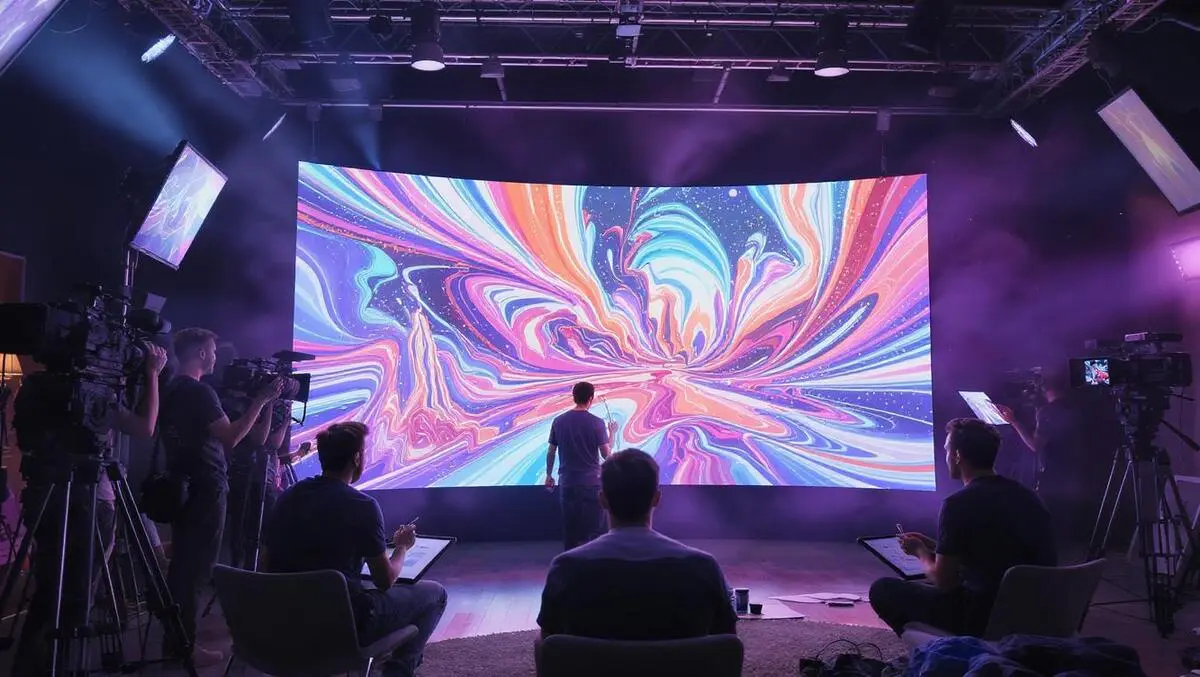
Golden age of human imagination
History rarely grants us front‑row seats to a full‑blown creative renaissance, yet that is exactly where generative artificial intelligence has placed us. LLMs, text‑to‑image, text‑to‑video, text-to-voice models have lowered the barriers. The barriers that filmmaking, fine art, and commercial storytelling were gate-keeping behind years of training, expensive equipment, and big teams. Anyone with a browser and a beautiful idea can now summon photorealistic characters, compose orchestral soundtracks, or visualise an entire feature film on a laptop. That sudden accessibility is not a curiosity, it is the catalyst for a wholesale shift toward co‑creation, where audiences, IP holders, and autonomous models collaborate as peers.
Democratising the "Impossible"
Consider the classic two‑hour movie. A few years ago, rendering minutes of high‑quality CGI could consume weeks of studio time and six‑figure hardware budgets. Today, a lone creator can prompt a generative video model for near‑real‑time storyboards, complete with lighting and camera movements. The skill threshold hasn't disappeared -- it has been wrapped in intuitive interfaces. When friction drops, participation explodes.
Humanity is not short on imagination; we have been short on tools. The gig‑economy artists who painted Fortnite skins, the fan‑fiction authors expanding the Marvel multiverse, and the TikTok creators remixing pop culture are early proof. Generative AI gives these grassroots communities studio‑quality tools, effectively inviting billions of people onto the production lot. The result will be a STORM of new IP, formats, and niche sub‑cultures that could not exist when "content" meant a hundred‑million‑dollar bet.
New Genres Follow New Tools
We have been here before. When 19th‑century painters perfected photo‑realism, the craft risked stagnation -- until Monet, Cézanne, and the Impressionists pivoted toward colour, light, and subjectivity that photography could not replicate. Generative AI will prompt a comparable genre quake. Once it becomes trivial to conjure a believable live‑action scene, creators will chase novelty elsewhere: interactive cinematic games that branch on player sentiment, AI‑native musicals in which a fan's prompt rewrites the chorus mid‑performance, or "infinite series" that evolve every time a community votes on the protagonist's dilemma. These are not sequels to existing media, they are formats that co‑creative algorithms and swarm‑scale audiences can sustain.
IP: From Controllers to Curators
Blockbuster studios and record labels will not vanish -- they will mutate. Maintaining a beloved franchise such as Star Wars grows riskier each year; a single misstep sparks social‑media firestorms that dent both brand equity and the balance sheet. Outsourcing part of the creative burden to the fanbase is economically and reputationally rational. Picture Disney hosting an officially licensed model hub: fans fine‑tune an "Episode X" on canonical assets, vote the best version to the top, and Disney green‑lights post‑production. Cost drops, loyalty soars, and the criticism cycle inverts -- after all, how loudly can you boo the script you wrote?
IP holders are afraid. But they should harness the innovation and become curators of possibility, setting guardrails, providing premium assets, and monetising downstream successes rather than dictating every pixel upstream.
New Ways to Advertise Your Products
Picture a small YouTube channel that reviews a little‑known anime called Mushishi. When the host goes live, an AI watches the stream. It notices the show's soft green colors and knows the host loves matcha tea. In seconds it drops a quick three‑second ad: a matcha kit that looks like the hero Ginko's travel bag. That ad only appears to viewers who have recently watched Mushishi clips and browsed tea online. Everyone else sees a different spot tuned to their own interests. One video, many custom ads - the line between the show and the commercial disappears.
The Challenge: Cost
Here lies the uncomfortable plot twist. Generating a few minutes of 1080p video via today's state‑of‑the‑art models still costs real money -- dollars per scene at retail cloud prices. Scale that to a feature‑length, fan‑driven film and budgets rival an indie production. For now, subsidies mask the true bill: OpenAI, Anthropic, and their peers burn investor capital to seed ecosystems; downstream text‑to‑video startups do the same; GPU cloud providers discount in exchange for logos and hype. Eventually, someone must pay for the electricity.
Solving that unit‑economics puzzle is our generation's moonshot. Hardware vendors chase cheaper, domain‑specific accelerators. Researchers prune, quantise, and distill models toward single‑GPU footprints. Open‑source collectives share checkpoints that run on consumer cards. Success means the difference between an enduring creative renaissance and a fad that flames out like dockless scooters.
A Call to Build Together
We stand at a hinge point. Generative AI can democratise authorship, spawn art forms our grand‑children will inherit, and realign advertising around genuine relevance rather than surveillance. Or it can collapse under unsustainable costs and ethical gridlock. The outcome depends on whether engineers, policymakers, and creators tackle compute, carbon, and copyright with the same ingenuity we lavish on diffusion kernels.
Talent is universal -- tools are not. Generative AI is changing that. The sooner we embrace audiences as collaborators, not consumers, the faster we unlock a future where culture is not handed down from on high but grown -- messily, joyfully, and sustainably -- from everyone up.

